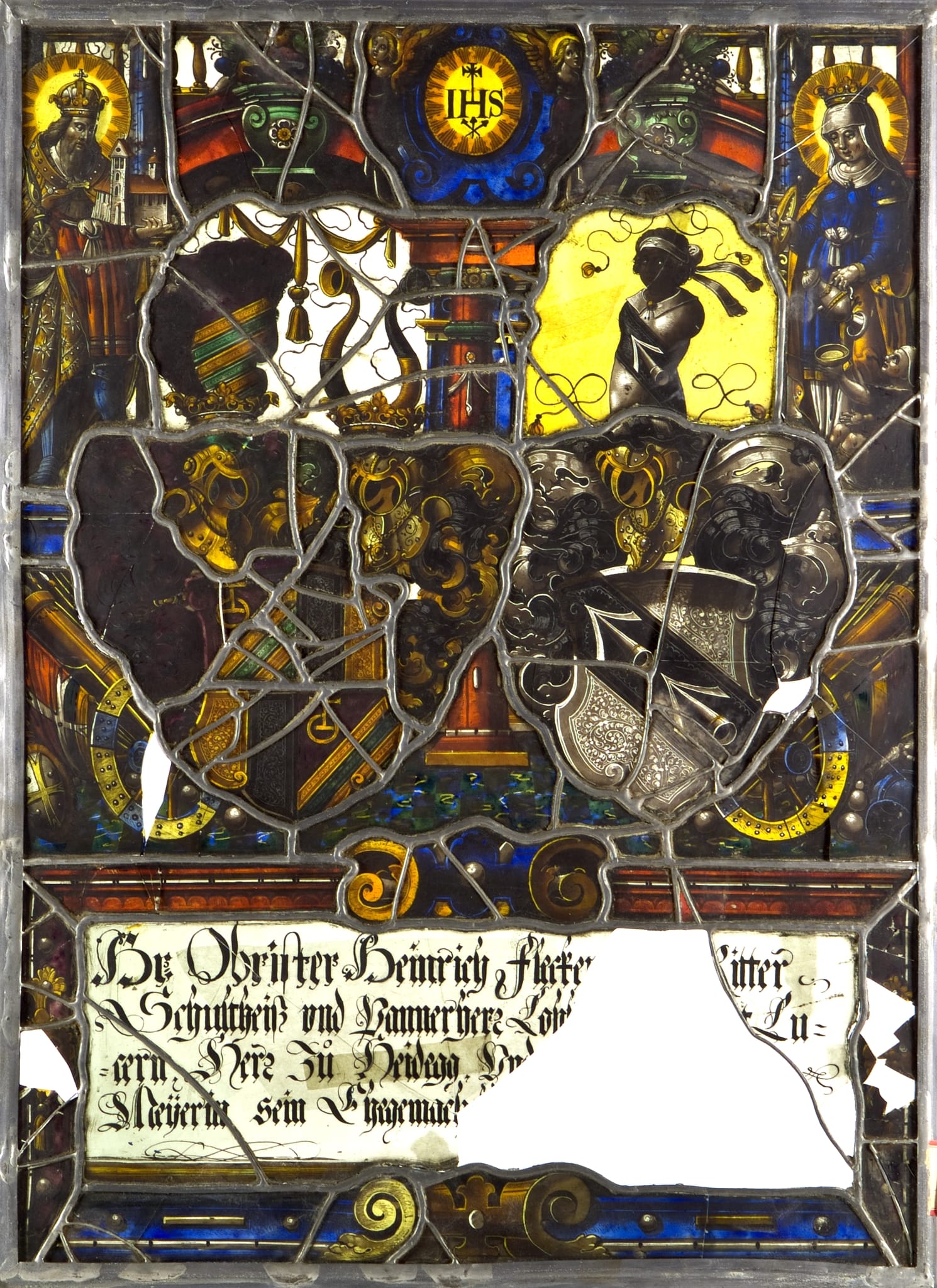Arms of husband and wife are set within an elaborate baroque architectural frame. The shields are surmounted by barred helms with rich mantling of the heraldic colors. Their crests are silhouetted against white and yellow ribboned grounds. A balustrade extends across the top of the panel; it surmounts a red double arch whose center presents a shield with the IHS monograph for Jesus within a blue cartouche. At the sides are the name saints of the donors, to the left the Holy Roman Emperor Henry II who carries the cathedral of Bamberg, and to the right, Elizabeth of Hungary who gives food to a beggar. In the level below them are depictions of military equipment including cannon, shields, and lances. The lower third of the panel is occupied by the inscription panel. A rectangular text on uncolored glass is set within a red and blue border embellished with three-dimensional scroll work at top and bottom.
11H(HENRY) · Kaiser Heinrich II. (von Bamberg); mögliche Attribute: Krone, Lilie, Kirchenmodell, Kugel, Zepter, Schwert
45A10 · Symbole, Allegorien des Krieges; Ripa: Guerra
46A122(FLECKENSTEIN) · Wappenschild, heraldisches Symbol (FLECKENSTEIN)
46A122(MEYER) · Wappenschild, heraldisches Symbol (MEYER)
Arms of Fleckenstein, Heinrich: quarterly, 1 and 4 per bend purpure a reichsapfel or bendy of four or and vert; 2 and 3 per pale and sable (Unidentified); crest on a ducal coronet a demi-vol charged bendy as the first mantling of the colors (RIGHT) on a ducal coronet two buffalo horns charged as the second
Arms of Meyer, Elisabeth: argent a pale sable charged with two broad arrows proper; crest on a wreath of the colors a demi-moor garbed and charged as the field; mantling of the colors
Hr. Obrister Heinrich Flecke[ . . . ] Ritter/ Schultheiβ und Pannerherr Lob[ . . . ] Lu=/ =cern Herr Zu Heidigg U [ . . . ] / Meÿerin sein Ehegemac [ . . . ] (state in 2009)
Hr. Obrister Heinrich Fleckenstein Ritter/ Schultheiβ vnd Pannerherr Loblicher Statt Lu=/ =cern Herr Zů Heidegg Vnd fraw Elisabetha/ Meÿerin sein Ehegemachell. Anno 1662 (photograph of 1985. Colonel Heinrich Fleckenstein, Knight, Mayor and Standard Bearer of the worthy city of Lucerne. Lord of Heidegg. Mrs. Elisabeth Meyer, his wife, in the Year 1662)
none
